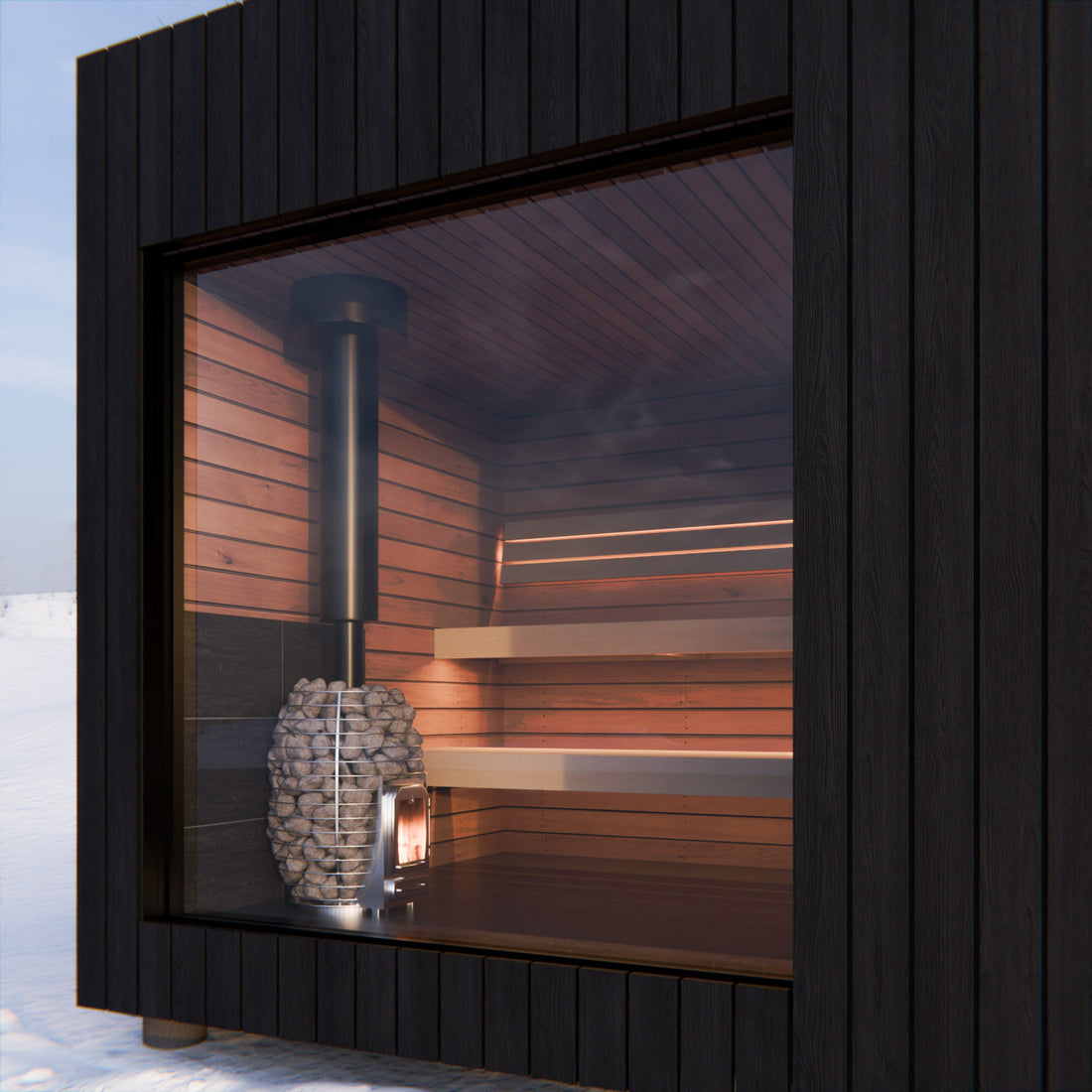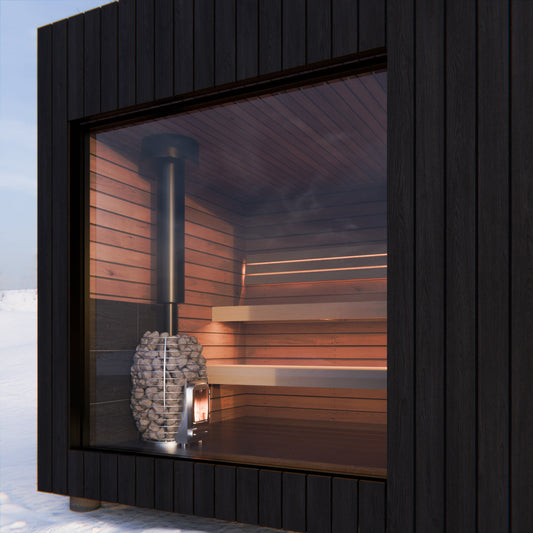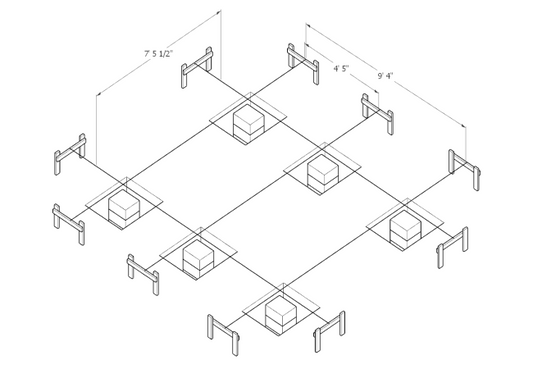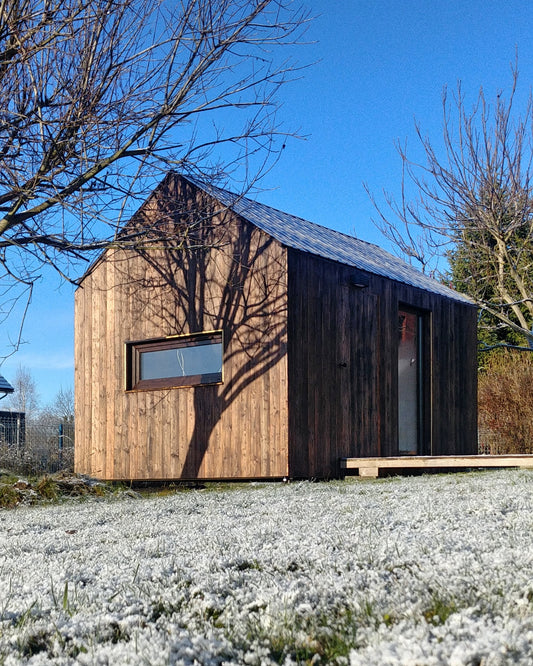
Sauna Maintenance: Tips for a Long-Lasting Sauna
Imagine stepping into your perfectly heated sauna, the cedar scent filling the air, ready to unwind after a long day… But what if your sauna shows signs of wear? Don't let neglect ruin your sauna dream. This guide will help you keep your sauna in top shape for years.
Knowing your sauna is the first step in proper care. A wood-burning sauna needs different upkeep than an electric one, especially for the heater and ventilation. Knowing the wood used is also key. Cedar, a popular choice, resists moisture, but even cedar needs regular cleaning to prevent drying, cracking, or dullness. Knowing the wood helps you choose the right cleaners. Finally, understanding your heating system (electric or wood-burning) is important for safety.
Sauna Wood Care
When it comes to sauna care, one of the main tasks is looking after the wood. Wood is porous, and over time it can build up dirt if you don't use towels between your body and the wood. The main thing is: don't use harsh cleaners that can harm the wood. When choosing cleaning products, it's worth paying attention to ecological ones that are safe for wood and the environment. Using soapy water to clean a sauna is not recommended. The soap can damage wood: it can leave a residue that is difficult to remove and can also cause discoloration of the wood. Instead, it is best to use clean water or a solution of water with vinegar or baking soda. Special cleaning agents designed for cleaning saunas can also be used. After each use, wipe the benches and floor with a damp cloth. Once or twice a week, conduct a more thorough cleaning. Always ventilate the sauna before cleaning, and dry the sauna thoroughly after cleaning.
Regardless of the cleaning product you decide, it is always good to test it on a small, inconspicuous area of the wood first to ensure it does not cause damage or discoloration.
Wood warping
Over time, your internal siding can develop warping. This wood's natural response to drying. The wider the tongue and grove boards, the more warping there will be. Warping also comes with shrinking, for the same reason. There is not much you can do. The only that can be done to combat this, is to try to maintain a slightly higher moisture in the air when the sauna in not in use. This can be done by leaving a bucket of water in the sauna. But be careful, if there is too much moisture, you are risking mold. The best way to combat this is in the planning stage of your sauna: use narrower planks of wood.

Maintaining Your Sauna's Heater
Regular maintenance of your sauna heater, whether electric or wood-burning, is crucial for safety and optimal performance. For electric heaters, ensure the unit is unplugged and cooled before checking heating elements for wear, cleaning dust, and verifying secure wiring connections; also, inspect electronic controllers if applicable, performing these checks monthly and a detailed inspection annually. For wood-burning stoves, prioritize annual chimney cleaning. Regularly remove ash from the firebox, and inspect door seals, cleaning thoroughly yearly. In both heater types, regularly check sauna stones for cracks, replacing them and arranging them loosely for proper airflow, and ensure adequate ventilation to prevent overheating. Always prioritize safety and seek professional help when required.
Sauna Ventilation
Proper sauna ventilation is not merely a comfort, but a critical safety and longevity factor. Effective ventilation systems, whether natural or mechanical, ensure the removal of high moisture air, preventing mold growth and wood decay, while simultaneously introducing fresh, oxygen-rich air for a more enjoyable and healthful experience. Natural ventilation, often utilized in traditional saunas, relies on strategically placed vents to facilitate air circulation, with cooler air entering low and warmer air exiting high. Conversely, mechanical ventilation, employing fans and ductwork, offers precise control over airflow, ensuring consistent air exchange. Regardless of the system, regular inspection is paramount. Check for signs of moisture accumulation, clear any obstructions from vents, and ensure mechanical components are functioning optimally. A well-ventilated sauna not only enhances the user's experience but also prolongs the lifespan of the sauna structure itself.
More about proper mechanical and gravitational ventilation you can read here.

Troubleshooting Sauna Heater Problems
Electric:
Not functioning - There can be many reasons for this. The most 2 common are sauna controller not working properly, or tripped fuses because of heating element failure. Check both. Heating element failure go out eventually, due to heating cycles. They can last from few months to few years, depending on the heater.
Wood:
Poor burning - this can be caused by full ashtray, ash buildup in the chimney, low atmospheric pressure or wet logs. Check and eliminate those problems (except for atmospheric pressure, we can't control it :) )
Sauna Maintenance Plan
A well-maintained sauna provides many hours of relaxation and health benefits. This plan outlines the necessary steps to keep your sauna in top condition, preventing costly repairs and ensuring a hygienic environment for every user.
After Each Use:
-
Wipe Down Surfaces:
- Thoroughly wipe down all benches, flooring with a mild wood-friendly cleaner or sauna-specific cleaner (remember to check how your wood reacts to the cleaner before using it).
- Pay special attention to areas where sweat and moisture accumulate.
- Ensure all surfaces are dry before closing the sauna.
Monthly:
-
Wood Inspection:
- Inspect all wood surfaces for signs of cracking, rot, or mold.
- Inspect all wood surfaces for signs of cracking, rot, or mold.
-
Electrical Inspection (visual):
- Visually check for any signs of damaged wiring.
-
Heater inspection:
- Check the heater for signs of heating element wear.
- Replace any cracked or broken stones to ensure even heat distribution.
- (Wood-Burning Stoves) Remove ash and debris from the firebox.
- Check the heater for signs of heating element wear.
-
Ventilation Check:
- Inspect ventilation openings for any obstructions (dust, debris, etc.).
- Ensure proper airflow.
- Check any mechanical fans for proper operation.
Annually:
-
Comprehensive Inspection:
- Perform a thorough inspection of all sauna components.
- (Electric Heaters) Check all electrical connections for wear and tear.
- (Wood-Burning Stoves) Schedule a professional chimney inspection and cleaning.
-
Deep Cleaning:
- Perform a deep cleaning of the entire sauna.
- Perform a deep cleaning of the entire sauna.
-
Wood inspection:
- Check the structural integrity of benches and supports.
Key Points:
- Safety First: Always disconnect power to electric heaters before any cleaning or inspection.
- Proper Cleaners: Use sauna-safe cleaners to avoid damaging wood or releasing harmful chemicals.
- Prompt Repairs: Address any identified issues immediately to prevent further damage.
- Professional Help: For complex electrical or structural issues, consult a qualified technician.
By sticking to this maintenance plan, you are investing in the long-term enjoyment of your sauna. Regular care not only extends the life of your investment but also ensures a clean, healthy, and relaxing environment for you and your family.
New to saunas, but dreaming of your own? Our comprehensive handbook guides you through the entire process, from planning to enjoyment! Or, dive right in with our sauna projects and start building today.



